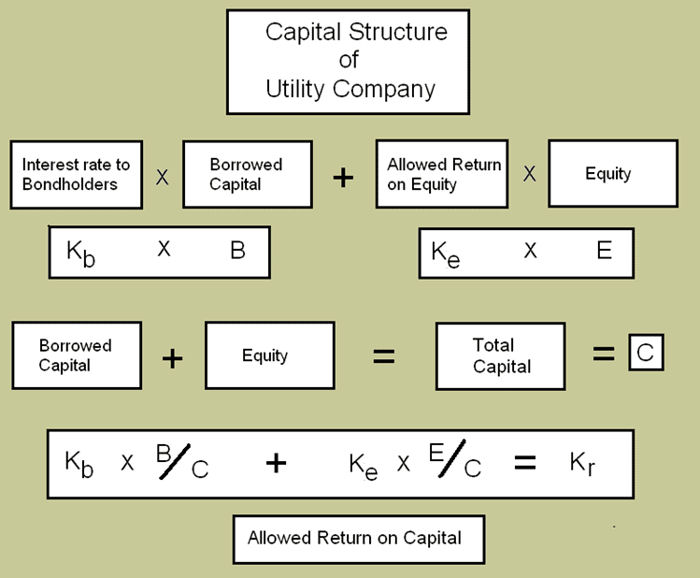Setting Utility Rates - Highlighted Article
From: Watts Up With That
By: Kevin Kitty
Date: November 5, 2023
Until about a year ago, I thought about public utility regulation as too boring, too far outside my education, and unrelated to my interests and experience to bother with. I was wrong.

Figure 1. The relationships among interest on bonds and dividends to preferred shares (collectively called debt) and return on capital to return to ordinary shareholders (equity)
What prompted my change of view was recognizing that a frontline in the war, if you will, to remake the electric grid will take place not in arguments about the reality of climate change, but when utilities decide to change the way they generate electrical energy and pay for these changes. The permission to make these changes, and how the ratepayer gets hit afterward, are decided in the public service commissions which by law have to make their deliberations substantially transparent to the public. In particular permission for changes are gained in hearings of public necessity and convenience; how the ratepayer gets hit is decided in rate cases. I plan to examine only rate setting in this brief essay.
My principal goal is this. Many of us are pretty certain that pouring more renewable energy into a network makes delivered energy more expensive and less reliable. We often point to a graph that shows costs rising with percent renewable contributions to generating capacity. Yet, our antagonists claim that adding energy from renewables should, and in fact does, reduce utility costs. They have data, too. We strengthen our case by demonstrating specific reasons, or lack thereof, for rising utility bills. The rate setting process ought to make those reasons visible.
I also suspect most people know little about rate setting and are unaware about its complexity. It’s important to understand this bit of the order of battle.
Where I live we are in the middle of a general rate case affecting one-half the state. It calls for substantial rate increases (21.6% or over $140 million) and has become exceptionally contentious. It resembles rate cases that have been decided or are in progress across the U.S.[1] The application for this general rate case includes thousands of pages of exhibits and appendices. (continue reading)